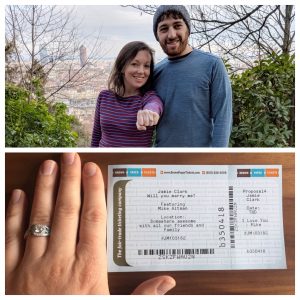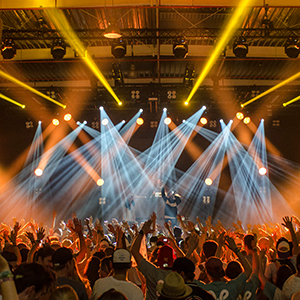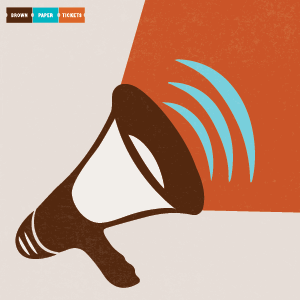
 Throwing your first event? Looking for press attention for your established events? Either way, media coverage builds fans and boosts revenue.
Throwing your first event? Looking for press attention for your established events? Either way, media coverage builds fans and boosts revenue.
Here are five simple steps to attracting media and press coverage:
1. Identify Your Objective Value Propositions
Value Proposition describes an innovation, service, or feature intended to make a company or product attractive to customers. In the realm of promoting your event, you will want to find the “golden nugget” of your event, i.e. your event’s value proposition. To help you find it, ask yourself these questions:
What is it about your show that makes new ticket buyers want to spend their hard-earned dollars?
What makes your event worth the price? Ticket at any price, but the higher the price, the more you will need to justify value.
The answers to these questions are what will attract press to cover your event and ticket buyers to your show. Add your unique value propositions to the event title, description and headline of your press release.
Find Your Superlatives
Superlatives can raise the value of the event. Brainstorm, research and highlight your event’s objective (not subjective) superlatives. Journalists rely on facts, not opinions, so your event superlatives must be provable.
Examples of objective superlatives:
– Award-winning performers (specify award and date received)
– Largest or only event by any measure? Any metric can be used to make the superlative accurate, but you have to be able to back up your claim in one sentence. (Examples: Biggest beer tasting in _____. First film festival in ___ . The longest running theater in ____. )
The press won’t be able to use the following superlatives because they aren’t provable by objective measures:
Wildest
Most fun
Greatest
_____ -est of its kind
2. Identify 5 Target Media Outlets
Ask or poll your fans what media outlet they read or watch regularly. The answer is more and more likely to be a blog, a newsletter, a social media outlet, or other non-traditional media. This is good news, as many non-traditional media have shorter deadlines and more spots for stories.
Gather your fan’s responses. Then take out media outlets that do not influence your local market because locals are more likely to buy tickets to your event. The remaining top 5 on this list are your targets.
3. Localize to the Largest Community Possible
Localize your event to create an attractive angle for the press to cover. Readers and viewers have more interest in what happens to people and places they know.
Add a location name to the title of your event and choose the largest community possible (i.e., the Northwest Beer Festival would attract more news value than the Bellingham Beer Festival).
However, if the smaller place of localization generates greater interest, use that. For instance, a Hollywood burlesque festival could sell more than a Los Angeles burlesque festival because of Hollywood’s caché.
How to do it
Get the hometown, neighborhood and professional high-resolution headshot for every performer in the event, and write an email to the appropriate reporter at his/her neighborhood blog (if it’s in your possible attendee coverage area) to alert them about the “hometown girl/boy done good story” with your event as the hook.
4. Make Your Pitch Picture Perfect
Media outlets need good visuals to get clicks, likes and shares. Find a photo or video that shows this visual aspect of your event. Keep in mind that media outlets typically won’t publish a photo or video unless it’s G-rated.
How to do it
Invest in professional headshots as well as at least one performance photo, all in high resolution.
If you are producing a show with multiple performers, ask them for headshots as soon as you book them for your show. You don’t want to lose a story because you don’t have photography ready.
Television stations aren’t likely to use promotional videos with music, graphics, credits or logos embedded over the video. Hire a videographer to get natural sound, close-up footage to maximize your media coverage.
5. Submit Free Calendar Listings
You have a great localized value proposition. You have an enticing event description and pitch subject line. You included at least one eye-catching visual. Time to get the word out.
Calendar listings are the low-hanging fruit of the publicity world. They are easy to get and almost always generate ticket sales (as long as you have successfully done steps 1-4).
Submitting a free calendar listing for your event is simple. Newsletter, blog or even The New York Times, every publication has an event listing. And you can be part of it if you complete the first four steps and closely follow event submission instructions.
How to do it
Take your new top five media outlet list. Go to the online events section for every special interest group, blog or media outlet. Search for “how to submit an event” and follow the directions. If you can’t find it, send the press contact a short email that describes your event. Ask the publication if they would write about it or include it in the topics they share with their community.
Boom. Your event is now listed on every single one of your top five media targets websites.
Editorial teams frequently look at their calendar listings when assigning stories. Therefore, this effort increases the likelihood of an additional, more in-depth story. There are many ways to amp the press for your event. But these basics ensure that the press you get goes further to help you achieve your goals and reach new levels of success.
Event Tips >

 Two love birds, one ticket stub, so many shows…
Two love birds, one ticket stub, so many shows…





 Arts
Arts Comedy
Comedy Event Tips
Event Tips Film
Film Food & Drink
Food & Drink Good Causes
Good Causes Music
Music News
News Radio
Radio Roller Derby
Roller Derby